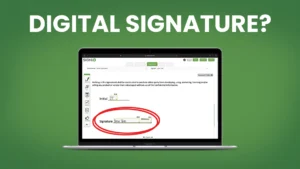As a Digital Creator, I’ve witnessed the rising popularity of digital wallets in our modern digital landscape. These versatile tools, also referred to as e-wallets or mobile wallets, offer users a convenient and secure method for conducting transactions. With a digital wallet, individuals can store their payment information electronically and effortlessly make purchases using their smartphones or other compatible devices. In this guide, I’ll walk you through the steps to utilize a digital wallet effectively, ensuring a seamless payment experience.
Step 1: Choose a Digital Wallet
The first step in using a digital wallet is selecting the right one for your needs. There are numerous digital wallet providers available, each offering different features and compatibility with various payment methods. Some popular digital wallet options include Apple Pay, Google Pay, Samsung Pay, PayPal, and Venmo. Research the available options and choose the one that aligns with your preferences and the devices you use.
Step 2: Set Up Your Digital Wallet
Once you have chosen a digital wallet, the next step is to set it up on your device. The exact process may vary depending on the wallet you have selected, but the general steps are as follows:
- Download the app: Visit the app store on your smartphone and search for the digital wallet app you have chosen. Download and install the app on your device.
- Create an account: Open the app and follow the instructions to create an account. This typically involves providing your personal information, such as your name, email address, and phone number. You may also be asked to link a payment method, such as a credit or debit card, to your account.
- Verify your identity: Depending on the digital wallet provider, you may need to verify your identity for security purposes. This can be done by providing additional information or completing a verification process, such as entering a code sent to your phone number or email address.
- Set a secure PIN or password: To protect your digital wallet, set a strong PIN or password that only you know. This adds an extra layer of security to prevent unauthorized access to your account.
Step 3: Add Payment Methods
After setting up your digital wallet, you need to add your preferred payment methods. This can typically be done within the app by following these steps:
- Open the digital wallet app: Launch the app on your device and log in to your account.
- Tap on “Add Payment Method” or similar: Look for the option to add a payment method within the app’s menu or settings.
- Select your payment method: Choose the type of payment method you want to add, such as a credit or debit card, bank account, or even cryptocurrency.
- Enter the required information: Follow the prompts to enter the necessary information for your chosen payment method. This may include card details, bank account numbers, or other relevant details.
- Verify your payment method: Some digital wallet providers may require you to verify your payment method for security purposes. This can be done by confirming a small charge or providing additional information.
Step 4: Make a Payment
Now that your digital wallet is set up and your payment methods are added, you can start using it to make payments. Here’s how:
- Open the digital wallet app: Launch the app on your device and ensure you are logged in to your account.
- Choose a payment method: Before making a payment, select the payment method you want to use from the options available in your digital wallet.
- Tap to pay: When you are ready to make a payment, look for the contactless payment symbol (usually depicted as four curved lines) at the point of sale. Hold your device near the payment terminal or follow the on-screen instructions to complete the payment.
- Authenticate the transaction: Depending on the security settings of your digital wallet, you may be required to authenticate the transaction. This can be done through methods like fingerprint or facial recognition, PIN entry, or a one-time password.
- Verify the payment: Once the payment is processed, you will typically receive a confirmation message on your device and a receipt, if applicable.
Step 5: Manage Your Digital Wallet
To ensure a smooth experience with your digital wallet, it’s important to manage it effectively. Here are some tips:
- Keep your information updated: Regularly check and update your account information, such as contact details and payment methods, when necessary.
- Enable security features: Take advantage of any additional security features offered by your digital wallet provider, such as two-factor authentication or biometric authentication.
- Monitor your transactions: Keep an eye on your transaction history to ensure accuracy and detect any unauthorized activity. Most digital wallet apps provide transaction history within the app itself.
- Protect your device: Keep your device secure by using strong passwords or biometric authentication, installing security updates, and using reputable antivirus software.
- Be cautious with public Wi-Fi: When using your digital wallet on public Wi-Fi networks, be mindful of potential security risks. Avoid entering sensitive information or making payments on unsecured networks.
By following these steps and best practices, you can confidently use a digital wallet for your everyday transactions. Digital wallets offer convenience, security, and a seamless payment experience, making them a valuable tool in today’s digital world. Whether you’re shopping online or making in-store purchases, using a digital wallet can simplify the payment process and provide peace of mind. Take the time to choose the right digital wallet for your needs, set it up properly, and manage it effectively to make the most out of this modern payment solution.
Frequently Asked Questions about Digital Wallets
What exactly is a digital wallet?
What exactly is a digital wallet?
A digital wallet, also known as an e-wallet or mobile wallet, is a virtual tool that securely stores payment information like credit card details, bank account info, and even cryptocurrency on smartphones or other electronic devices.
How do I go about setting up a digital wallet?
Setting up a digital wallet typically involves downloading a mobile app provided by a digital wallet provider, such as Google Pay, Apple Pay, or PayPal. After downloading, follow the prompts to create an account, link preferred payment methods, and set up security features like passwords, PINs, or biometric authentication.
What sorts of payments can I make using a digital wallet?
With a digital wallet, you can make various payments, including in-store purchases at places that accept contactless payments, online transactions on e-commerce sites and mobile apps, peer-to-peer transfers to friends and family, and even bill payments.
Is using a digital wallet safe?
Yes, digital wallets utilize advanced security measures such as encryption, tokenization, and biometric authentication (like fingerprint or facial recognition) to protect payment information. Additionally, most providers offer buyer protection and fraud detection services for added security.
Can I add multiple payment methods to my digital wallet?
Absolutely! Most digital wallets allow you to add multiple payment methods, including credit cards, debit cards, bank accounts, and even loyalty cards. This flexibility enables you to choose the most suitable payment option for each transaction.











Be First to Comment